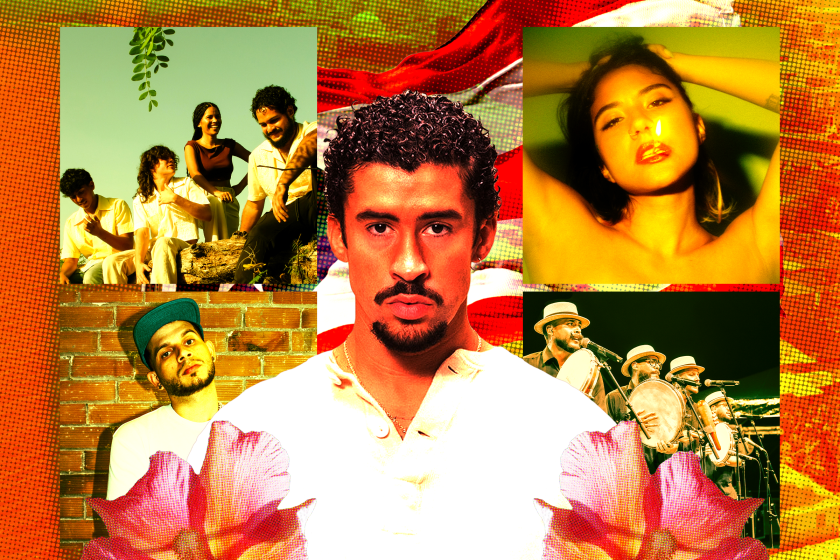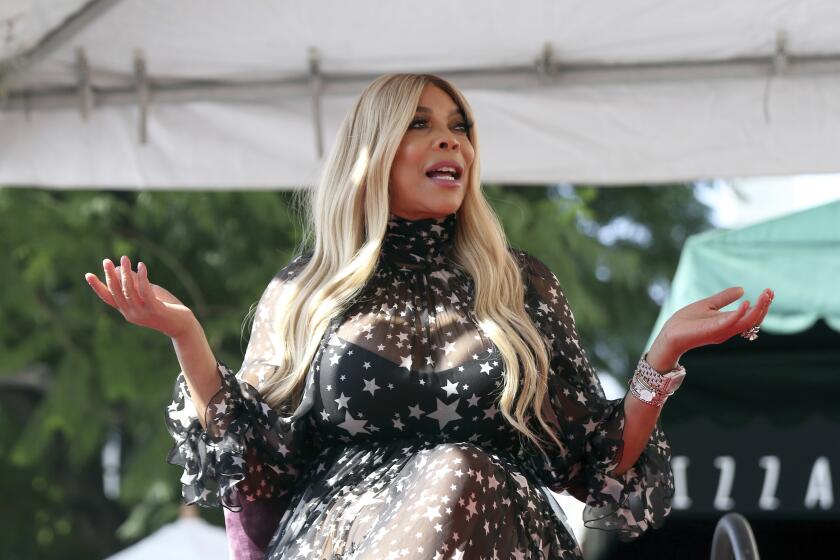‘Hunger Games’: A dark mirror on our own world
- Share via
Children murder one another in a multitude of gruesome and memorable ways in “The Hunger Games,” deploying spears, arrows, rocks, venomous wasps, mutant wolves and their bare hands in a televised gladiatorial death match.
The juvenile slaughterfest depicted in the film and its source material, Suzanne Collins’ trilogy of bestselling young adult novels, may give audiences (particularly parents) pause — is this what contemporary entertainment has come to? But violence committed by and against children has a long, grisly tradition in literature — as an allegory for adult cruelty, a representation of the emotional volatility of adolescence and a tension-raiser for audiences.
“We are eager voyeurs,” said Maria Tatar, chair of the program in folklore and mythology at Harvard University and author of “Enchanted Hunters: The Power of Stories in Childhood.” “I start to question my own excitement about this movie. Why do I want to watch this? Why is it so seductive to see children in peril? The author is critiquing violence, but she’s reminding us that we are implicated. It’s within us.”
Collins has said she found inspiration for her story, which is set in the future, in the ancient Greek myth of Theseus and the Minotaur, in which the Cypriots demand Athens send seven boys and girls each year as food for the half-man, half-bull, until Theseus slays the beast. In “The Hunger Games,” Katniss Everdeen, a 16-year-old tomboy handy with a bow and arrow, is a Theseus-type character, a young savior fighting on behalf of all the other children.
“There’s a part of us that feels that only a child can save us,” Tatar said. “It takes the innocence and purity of a child. That fantasy has been around since before Christ.”
The brutality of “The Hunger Games,” which results in the deaths of more than 20 youths, follows in the gory footsteps of many of the Grimms’ fairy tales, which were first published in 1812. In “Hansel and Gretel,” a pair of abandoned siblings escape from a cannibalistic witch by stuffing her into the oven; in “The Juniper Tree,” a woman slams the lid of a trunk on her stepson and decapitates him; and in the axiomatically titled “How Some Children Play at Slaughtering,” a little boy stands in for a pig in a child’s game of butchering.
Often, stories of barbarous children are actually fables about the present-day behavior of adults. In William Golding’s 1954 novel “Lord of the Flies,” a group of boys stuck on a deserted island descends into savagery, slaughtering and torturing one another in a bid for power.
“This is a dystopian nightmare in which [Golding] shows us our own culture,” said John Granger, author of several literary analyses of the “ Harry Potter” and “Twilight” books and editor of the bookish website HogwartsProfessor.com. “This was about 1950s conformity, that that conformity had a back to it as well as a front. Yes, we defeated the Nazis, but we continued to treat black people like animals. In backlash to that conformity, we get stories like ‘Lord of the Flies.’ We get to see our own world in a very dark mirror. We can recognize ourselves in this very ugly reflection.”
From Oliver Twist to Harry Potter, many of literature’s embattled children share a defining quality — the loss of at least one parent. In Katniss’ case, her father is dead and her mother is emotionally absent.
“When you have a hero or heroine who’s an orphan, you engage the reader’s natural, protective sympathy,” said Granger. “You have heightened the reader’s experience. You identify with that young person.”
The drama of the violent “Hunger Games” contest and Katniss’ need to fight it on her own may appeal particularly to adolescents because they are going through a crucial stage of emotional development, according to child and adolescent psychiatrist Harold Koplewicz.
“Between the ages of 11 and 24, your brain is going through a remarkable revolution,” said Koplewicz, president of the Child Mind Institute in New York. “Your emotional development is accelerated before your impulse control. You’re freezing, you’re boiling, you hate [everyone], you love them. You have very deep and well-felt emotions, but it’s very hard. The look of ‘Hunger Games,’ of fighting for your life, of feeling like your parents are nowhere around, captures that.”
For teens — for whom so much of life can feel like the end of the world — the post-apocalyptic terror of “The Hunger Games” and other stories about youngsters in battle can be cathartic. But for adults, there can be a spiritually useful connection as well.
“We are curious human beings,” said Tatar. “We want to know, what if? What if we’re faced with the worst possible scenario? What would we do to survive? That’s what makes us human. Who wants to read about sunshine and happiness? I worry with the protagonist. I want her to survive. I want to her make it through, and I want to know how she did it because I want to be able to use that kind of knowledge and intelligence when I’m faced with something that feels impossible.”
More to Read
The biggest entertainment stories
Get our big stories about Hollywood, film, television, music, arts, culture and more right in your inbox as soon as they publish.
You may occasionally receive promotional content from the Los Angeles Times.











